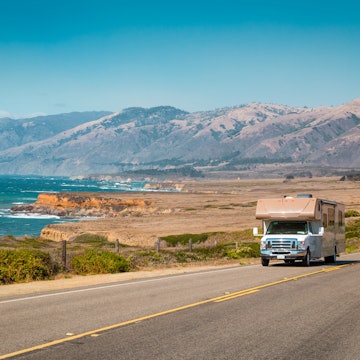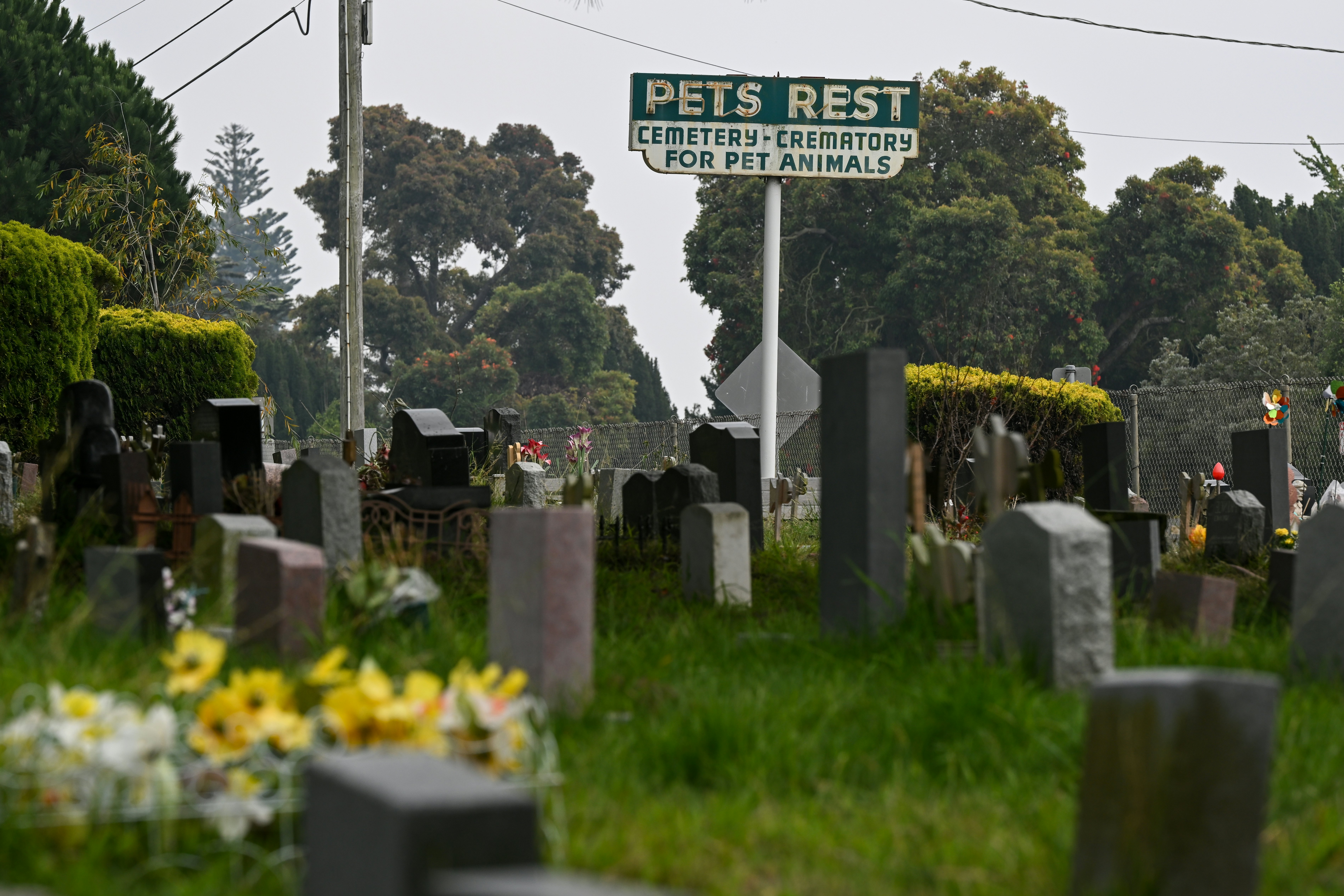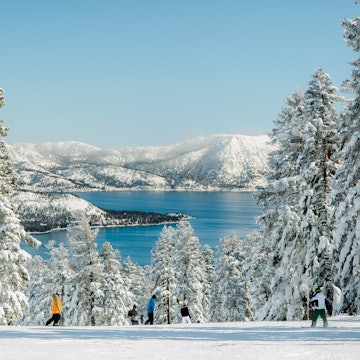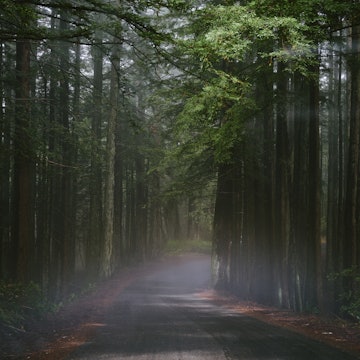

Elkhorn Slough winds from Monterey Bay inland toward Watsonville. Edmund Lowe Photography/Shutterstock
San Francisco has so much to do that first-time visitors might not want to travel far beyond city limits. But a day trip into the surrounding area's mix of fast-paced culture, natural beauty and history will let you experience so much more of this gorgeous area, no matter the time of year.
Sights beyond the city are plentiful and enriching in whichever direction you travel. While popular places to go in the San Francisco Bay Area – like the majestic redwoods of Muir Woods or the massive Monterey Bay Aquarium – are classic, also consider lesser-known wine regions, underrated cities and up-close-and-personal views of the animal kingdom.
Here are our top choices of places to visit within a couple of hours of San Francisco.

1. Eat Vietnamese food in San Jose
Travel time: 1 hour driving (outside of rush hour); 1 hour to 90 minutes by public transit
How to travel: By car, BART, Caltrain or bus
About 55 miles south of San Francisco, San Jose has one of the highest populations of Vietnamese Americans in the US, and therefore one of the best Vietnamese food scenes around. While not usually high on the tourism list – except for maybe the Winchester Mystery House or hockey team San Jose Sharks – San Jose has positioned itself as the capital of Silicon Valley. Not too shabby of an association, but many outside the city are unaware of its significance as a Vietnamese cultural hub, as well as being home to large populations of Mexican, Indian and other immigrant communities.
In Little Saigon in East San Jose, start your day at Lion Plaza, which was the first Vietnamese strip mall in San Jose. Get a hearty breakfast of filet mignon on a sizzling platter from Bo Ne Phu Yen, accompanied by eggs, crisp side salad, hot tea and fresh Vietnamese baguette. In the same plaza, pick up Vietnamese and other Asian groceries from the huge Lion Supermarket. At the outdoor Paloma Plaza is Hue Restaurant, which offers hard-to-find imperial Central Vietnamese specialties like bánh bèo (small rice flour cakes topped with dried shrimp and fried pork skin).
Wander the stores of Vietnam Town that feature regional Vietnamese specialties. Map out a food plan and possibly bring a cooler for leftovers. If you're keen to explore more of San Jose's Vietnamese community history, visit the Viêt Museum, the first and largest museum dedicated to Vietnamese refugees.
The trip from San Francisco is quick enough that you probably won't need to stay overnight, but if you do there are plenty of hotels and unique short-term rentals such as those on Airbnb.
How to get to San Jose from San Francisco: Drive via US-101 S and I-280 S. You can take the Caltrain to San Jose Diridon Station, then rideshare to one or two of the bigger strip malls. Or take the BART to Berryessa/North San Jose Station and then the VTA bus 77. Bear in mind that it gets hot in San Jose, especially compared to San Francisco, so exploring on foot can get uncomfortable.
2. Taste your way through lesser-known wines in Suisun Valley
Travel time: 1 hour and 30 minutes
How to travel: By car
Suisun (suh-SOON) Valley is a wine region just northeast of San Francisco with its own microclimate. It tends to be less crowded than the popular, neighboring Napa and Sonoma valleys. "Suisun" is Indigenous Patwin for "where the west wind blows," and local weather can present itself as a gentle, cooling breeze that yields signature cabernet sauvignon, merlot and petit sirah.
Caymus Vineyards in the palm tree-bordered Caymus-Suisun Winery has a grand tasting room. The rest of the wine trail includes Sunset Suisun and the expanded BackRoad Vines at its Village 360, all anchored by the community of Mankas Corner, which also has the valley's best dinner option at steakhouse Mankas Grill.
Farm stands and shops also abound, such as Cal Yee Farm, which sells dried fruits, nuts and even dog sweaters hand-knitted by the owner.
Suisun Valley is close enough to the city that you can go and return on the same day. If you want to take a more leisurely approach to the trip and fit in tastings in more regions, such as the neighboring Green Valley or the more mainstream Napa Valley, the most plentiful accommodation options lie in mostly chain hotels and motels in the nearby, though less exquisite, Fairfield. If you're a jelly bean fan, though, Fairfield's proximity to the Jelly Belly Factory is a plus. Otherwise, groups of up to 16 can rent the entire estate of the bucolic Suisun Valley Inn.
How to get to Suisun Valley from San Francisco: It's 45 miles from San Francisco to Suisun Valley, and driving via I-80E is the fastest way to get there. No regular tour lines run between San Francisco and the valley, but once you arrive in wine country, you can contact a wine tour company to craft a custom door-to-door Suisun Valley itinerary – the perfect solution if you'd rather imbibe than drive.

3. Travel back in time in Locke, a historic Chinese settlement
Travel time: 2 hours and 10 minutes
How to travel: By car
In the hot Sacramento Delta lies the small town of Locke, a well-preserved wild west area created by and for Chinese settlers in 1915 – the only one of its kind left in the US. Many of its false-fronted wooden buildings along Main Street have been made into free mini museums that you can duck into as you make your way down the street.
See the tiny beds seasonal workers rented in the old boarding house, a money room and the original, thick-walled safe in the gambling den, student desks in a Chinese school, and traditional Chinese instruments in the benevolent association. It's easy to picture how the town once also had Prohibition-era speakeasies, brothels, slaughterhouses and even a Chinese opera house for its 600-plus residents and 1000 seasonal laborers.
Today, aside from museums, Locke also has a few worthy spots to drink and eat, making for a complete one-stop day trip. Italian-American-founded Al the Wops (or just Al's Place or Al's) is a dive bar with plenty of beer and substantial pub fare like burgers. When the owner feels like opening it, step into the Lockeport Grill & Fountain for an ice cream sundae or grilled cheese lunch combo. It's also connected to the Locke B&B upstairs for those who want to stay in this peaceful town a little longer.
Most of Locke's Chinese American descendants have moved away, but many of its current residents are artists who show their work at Main Street galleries or run the quirky thrift shops in town. Swing by Walnut Grove on the way to or from Locke for more food options or the nearby town of Isleton to visit Isleton Museum, which contains more regional history pertaining to the area's Chinese settlers.
How to get to Locke from San Francisco: Locke should show up on your GPS, but nearby Walnut Grove is an option if you're struggling. The town is accessible by car via I-160, 75 miles from San Francisco. Phone service is spotty in Locke, so upload or print any directions or maps you may need beforehand. You can take half a day to explore the buildings and museums on Main Street on your own or book a walking tour of the town through the Locke Foundation. Park for free on Main Street or in a free lot near the public restrooms further north.

4. Find magical fairy doors in Alameda
Travel time: 40 minutes (with no traffic); around 1 hour by public transit
How to travel: By car or BART and bus
Mini fairy doors at the base of trees or in kitchens have existed across cultures for centuries, and the cultural phenomenon is alive and well on the island of Alameda in the East Bay. Visiting Alameda is also a perfect excuse to get outside and explore a less touristy spot of the Bay Area. Credited to woodworker Fred Hogenboom and his granddaughter, the community art project started by the duo in the 2010s sparked first a neighborhood, then a citywide trend that continues to this day.
Spend a leisurely couple of hours in the quiet neighborhoods of Alameda, using this Google map to guide you as you visit simple, flat, two-toned doors affixed to the base of utility poles and entire fairy condo complexes in people's front gardens. Once you spot one door, you'll start seeing them everywhere. The map depends on a dedicated Facebook group of volunteers who keep it updated. Feel free to dress up in your magical best and bring fairy offerings like pennies, glass beads or notes. Depending on the weather, like after a storm, a few fairy doors may not be visible or in good condition. Don't worry, though: new ones are always popping up.
Downtown Alameda is actually just a short walk north of the fairy door cluster around Clinton Avenue and Oak Street and has a robust food and drink scene. If you're going on a morning fairy door hunt, check out the flakiest croissants at Crispian Bakery. Or grab gooey cheeseburgers for lunch at Spinning Bones or Scolari's Good Eats, spicy hand-pulled Xi'an noodles at Wild Ginger or dessert at Tucker's Ice Cream.
How to get to Alameda fairy doors from San Francisco: Drive via I-80 E. You can also take BART to Fruitvale Station, then transfer to AC Transit bus line 51A to walk to one or two clusters of fairy doors.

5. Kayak with harbor seals and sea otters in Elkhorn Slough
Travel time: 2 hours without traffic
How to travel: By car
Elkhorn Slough lies about 100 miles south of San Francisco and 20 miles north of Monterey and is one of the first estuarine sanctuary in the US. You can kayak its 7 miles of navigable waterways that stretch from Monterey Bay inland toward Watsonville and commune with harbor seals, sea otters and nearly 350 species of birds.
While you can rent kayaks from either the quaint fishing village just north in Moss Landing, the most convenient option is to rent kayaks at Elkhorn Slough itself. Try Kayak Connection or Monterey Bay Kayaks. Explore on your own or sign up for a guided tour, which is recommended for first-timers. While you have to keep a few kayaks' lengths away from otters and seals for safety reasons, you will still find yourself surrounded by dozens of frolicking sea creatures. Some friendly, curious ones will swim up closer to look at you. Bring a change of clothing, because you will get slightly wet.
Afterward, refuel by indulging in some fresh local seafood at Sea Harvest in Moss Landing or Haute Enchilada Cafe just south. If you're raring to go after lunch, you can add a hike starting from an educational visitor center that's 6.5 miles north of the slough. You can make it back to San Francisco on the same day, but if you're exhausted from kayaking and hiking, consider booking a stay at the nautical-themed Captain's Inn at Moss Landing or the modern boutique hotel at The Inn at Moss Landing.
How to get to Elkhorn Slough from San Francisco: Drive on US-101 S to CA-17 S to Santa Cruz to CA-1 S toward Monterey.

6. Enjoy the peace and beauty of Colma's cemeteries
Travel time: 30 minutes
How to travel: By car or BART
The City of the Silent is just one of the spooky nicknames Colma has garnered since the small town became the final resting place for San Francisco's dead. The well-manicured cemeteries with their smooth walking paths and verdant blooms make for offbeat green space and historical sightseeing options. San Francisco banned burials within city limits in 1901, so Colma – formerly known for its agriculture – became the City of Souls in a short amount of time. Its current population of about 1800 living is far outnumbered by the 1.5 million people interred here.
With 17 cemeteries big and small, Colma has resting places designated by religion, ethnicity and everything in between. Cypress Lawn is one of the bigger cemeteries, with sections straddling the busy El Camino Real. Drive through the arched entrance to find benches, fountains and large trees for quiet contemplation or even a picnic.
Plenty of celebrities found their final resting place in Colma, from the baseball-lined grave of Joe DiMaggio at Holy Cross Catholic Cemetery to frontier lawman Wyatt Earp at the Jewish Hills of Eternity Memorial Park, just down the row from denim magnate Levi Strauss in Home of Peace. Visit at least one mausoleum, usually adorned with colorful stained glass windows and whose cool interiors are extra welcoming on a hot day.
To add another unusual dimension to your Colma cemetery visit, also go to Pet's Rest cemetery to see sandblasted portraits of beloved pups. Rumor has it that Tina Turner's dog rests there in an unmarked grave.
Afterward, grab a pint of Guinness at Molloy's Tavern, which was originally built to serve cemetery construction workers and nowadays has Las Pencas Mexican food truck parked outside. Or eat at Café Colma inside the Lucky Chances card room, open around the clock for huge portions of Filipino, American diner and Cantonese comfort dishes.
How to get to Colma from San Francisco: Colma is a quick 30-minute drive south of downtown San Francisco on I-280S. You can also take the BART to Colma Station, then walk to the closest cemeteries or transfer to the SamTrans ECR bus line, but only if you're sticking to one or two cemeteries. While clustered together, the grounds are quite spread out and walking from one to another is time-consuming. The Colma Historical Association offers occasional cemetery walking tours and is open on Saturdays as a small museum.

7. Indulge your love for garlic and U-pick produce in Gilroy
Travel time: 1 hour 40 minutes (depending on traffic)
How to travel: By car
There's no mistaking that you've arrived in Gilroy when the scent of garlic fills your nostrils. Many people come for the Gilroy Garlic Festival, a popular yearly event that includes garlic food and goods, including garlic ice cream. But reasons to visit Gilroy stretch beyond buying garlic braids, including a varied, abundant U-pick season, plus other family-friendly amusements (but also buy the garlic braids). U-pick season usually runs May through October, though the weather and other factors can shorten or lengthen it. Check farm websites beforehand to see if they're open and what is available to pick.
Many farms are open on the weekends only, though some offer weekday or appointment-only hours. Arrive early to avoid crowds and picked-over rows and remember to bring cash and sun protection. You can pluck ruby red strawberries at Berry Island Farms or Tru2Earth Farm, and cherries are plentiful at Borello Family Farms. You can even pick lavender and other flowers at the farms. If you're open to varieties of produce to pick, look to surrounding areas like Watsonville and Morgan Hill or farms in Santa Cruz if you'd like to be slightly closer to San Francisco.
Outside of the U-pick experience and season, visit Gilroy's farmstands when certain produce seasons hit. LJB Farms also creates a huge pumpkin patch during October, complete with plenty of photo-worthy decorations and snack trucks on site. Gilroy Gardens Family Theme Park is a bit pricey but has oddly shaped circus trees and produce-themed rides. And a trip to the Gilroy Premium Outlets can be an air-conditioned respite from the Gilroy heat.
If you need more sustenance than strawberries for lunch, head to OD's Kitchen for a hearty diner brunch, any location of Tacos Ameca for thick, chewy handmade corn tortillas, or the Mike's Backyard BBQ weekend pop-up inside of Garlic World.
How to get to Gilroy from San Francisco: Drive south on US-101 and take exit 356 for Gilroy.
















